Dear Reader, in this age of AI created content, please support with your goodwill someone who works harder to provide the human-made. Sign up at the top of the lefthand column or bottom of this page. You will receive my hand illustrated monthly newsletter RESTORE NATURE and access to the biodiversity garden design course as I write...and nothing else, I respect your time. I am also removing the advertizing as best I can as its become intrusive inappropriate and pays me nothing.
Planting biodiversity and resilience with highly diverse cover crop seed
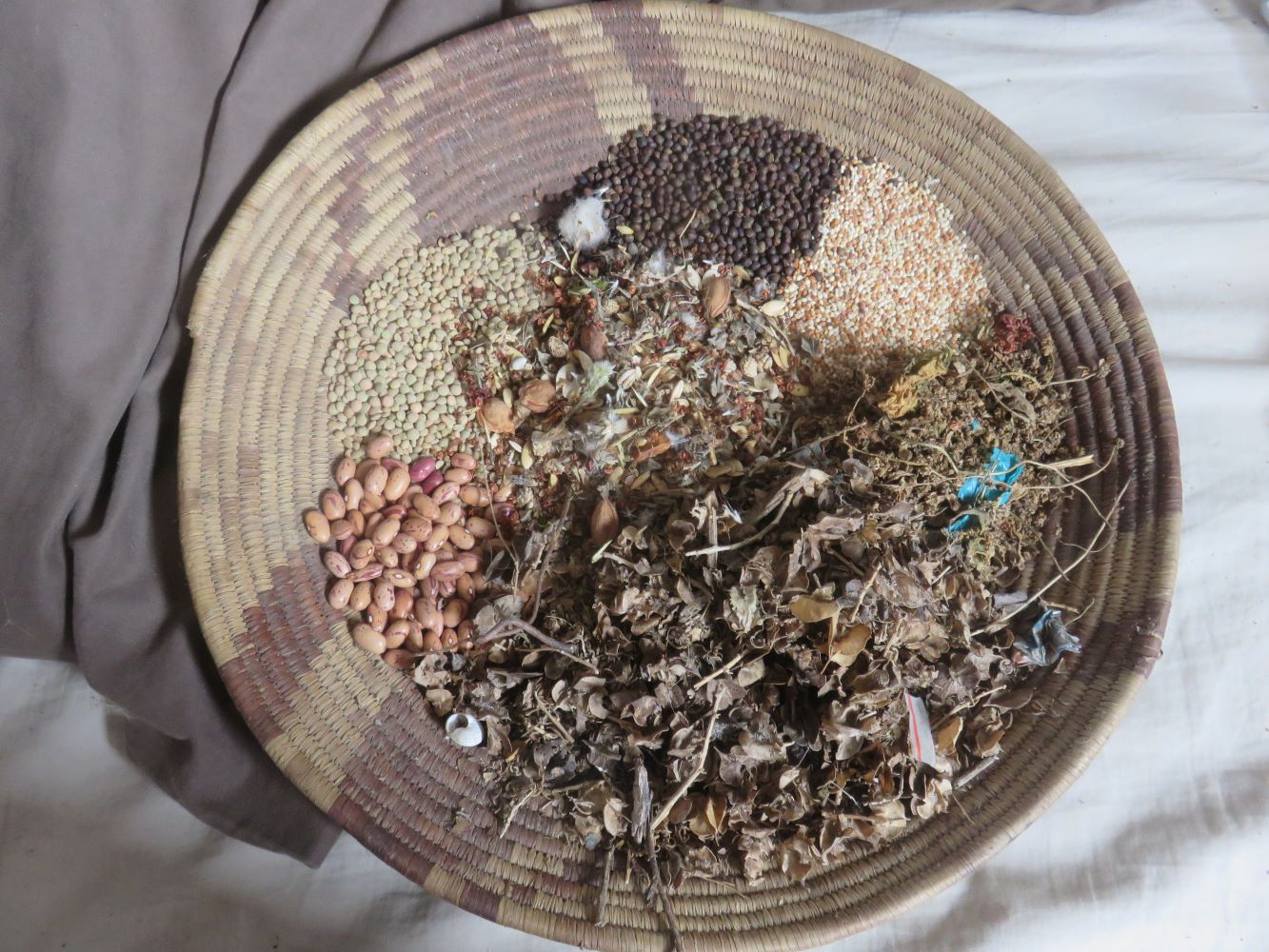 A thirty species cover crop seed mix I made at next to no cost
A thirty species cover crop seed mix I made at next to no costIn regenerative gardening its good to use highly diverse cover crop seed. I'll explain why.
Total plant cover
To adhere to the regenerative gardening principles, based on regenerative agriculture principles, we need to keep the soil covered at all times. The best cover is living plants rather than dead mulches. Mulches do put some organic matter in the soil as they decay, on the surface mainly, but in time they oxidize completely, or burn away. On the other hand plants keep growing and pumping sugars from photosynthesis into the ground to feed the life in the soil, and this reaches deeper soil horizons than mulches. A useful way to keep the ground covered with plants is to use cover crops. That is understory, or low plant growth from the direct sowing of seed. A cover crop need not be a food crop, its main purpose is to nurture soil, but it can be edible, useful or beautiful.
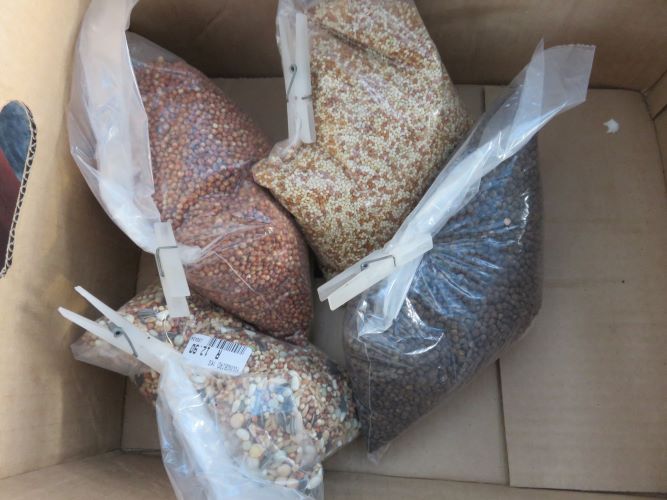 My first collection of cover crop seed from a pet shop
My first collection of cover crop seed from a pet shopDiversity
The diversity of the cover crop seed is good. I've come a long way since my first article on cover crops where I made a mix of four agricultural seeds I had bought as bird seed from a pet food store. I even sowed them individually rather than mixing them.
Something that first showed me the strength of diversity was reading on the human gut microbiome. In ecosystems, be they in the gut or in the plants in your garden, diversity creates resilience. Its almost a universal rule. It does this by establishing a kind of balance that keeps 'invaders' in check, which in the case of the human gut would be a pathogenic infection, and in the garden would be some plant that tends to take over. Diversity is one of the levers used when gardeners create pathogen suppressing soils in their gardens. There we are dealing with diversity in the soil's microbiome, supplied by added ferments and manures and woody material to encourage mycelium.
Since doing the advocacy course at Kiss
the Ground, the importance of diversity really came home to me. The
new angle which came into sharp focus was that diverse planting
supports a more diverse soil microbiome, as every plant has its own
ecosystem. This greater microbial diversity brings greater allover
nutrient availability, thus healthier plants and stronger
photosynthesis, and therefore more sugars in the soil exudates of the
plant's roots, and a feedback loop that creates a virtuous cycle of
increased soil quality and carbon sequestration in the soil.
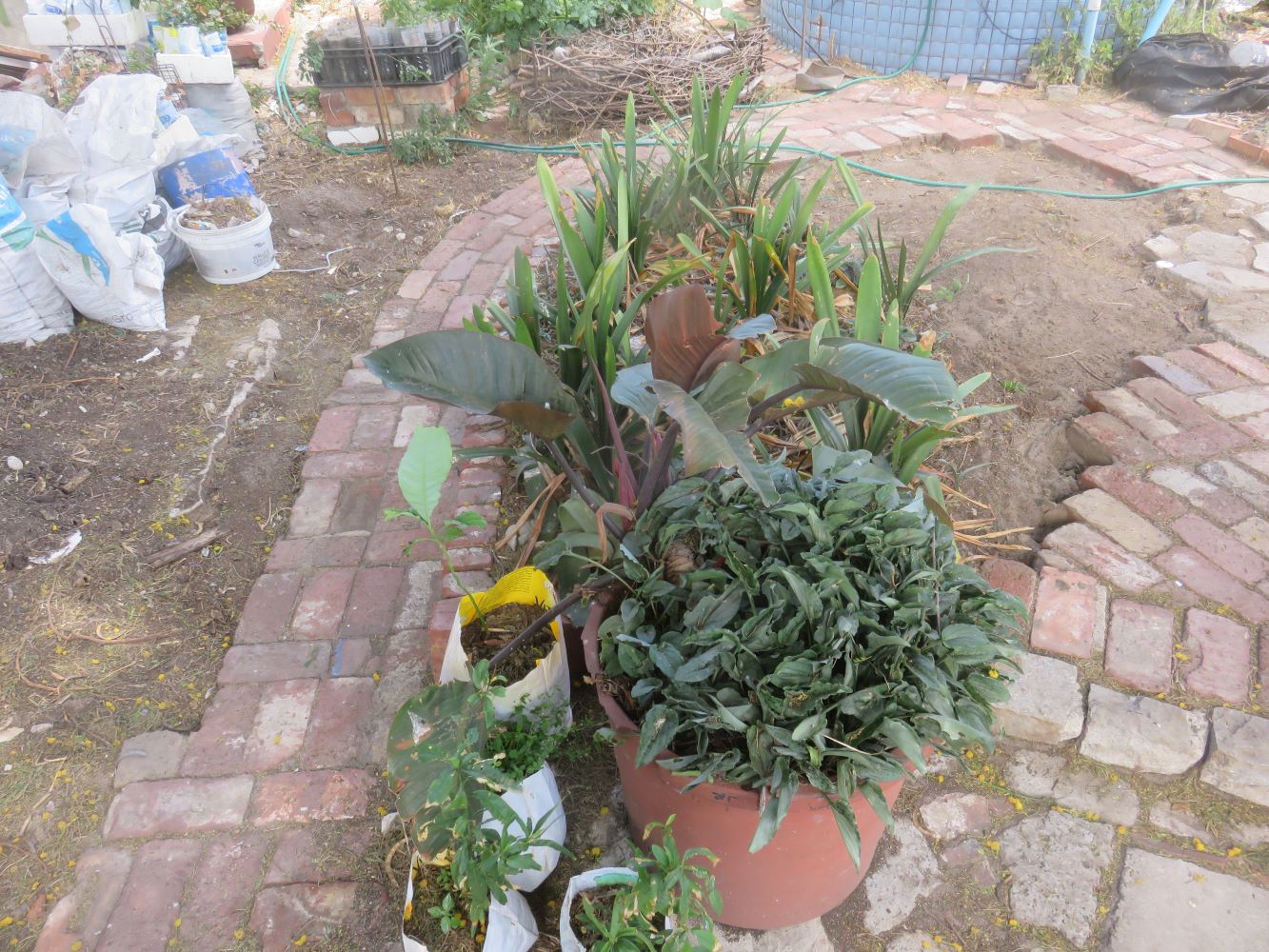 The area where nothing would grow
The area where nothing would growAfter the Kiss the Ground course I stopped thinking that paving large areas of the garden where 'nothing grew' under big trees, and mulching the rest was good enough. I decided to get more plant cover. I began collecting seeds for my cover crops and I lifted any unnecessary paving. I protected the area for a few weeks with netting held down by bricks. After a few months the places where 'nothing grew' for decades were a luxuriant medley of foliage, most of which is edible. It is one of the most resounding successes of my regenerative gardening experiment.
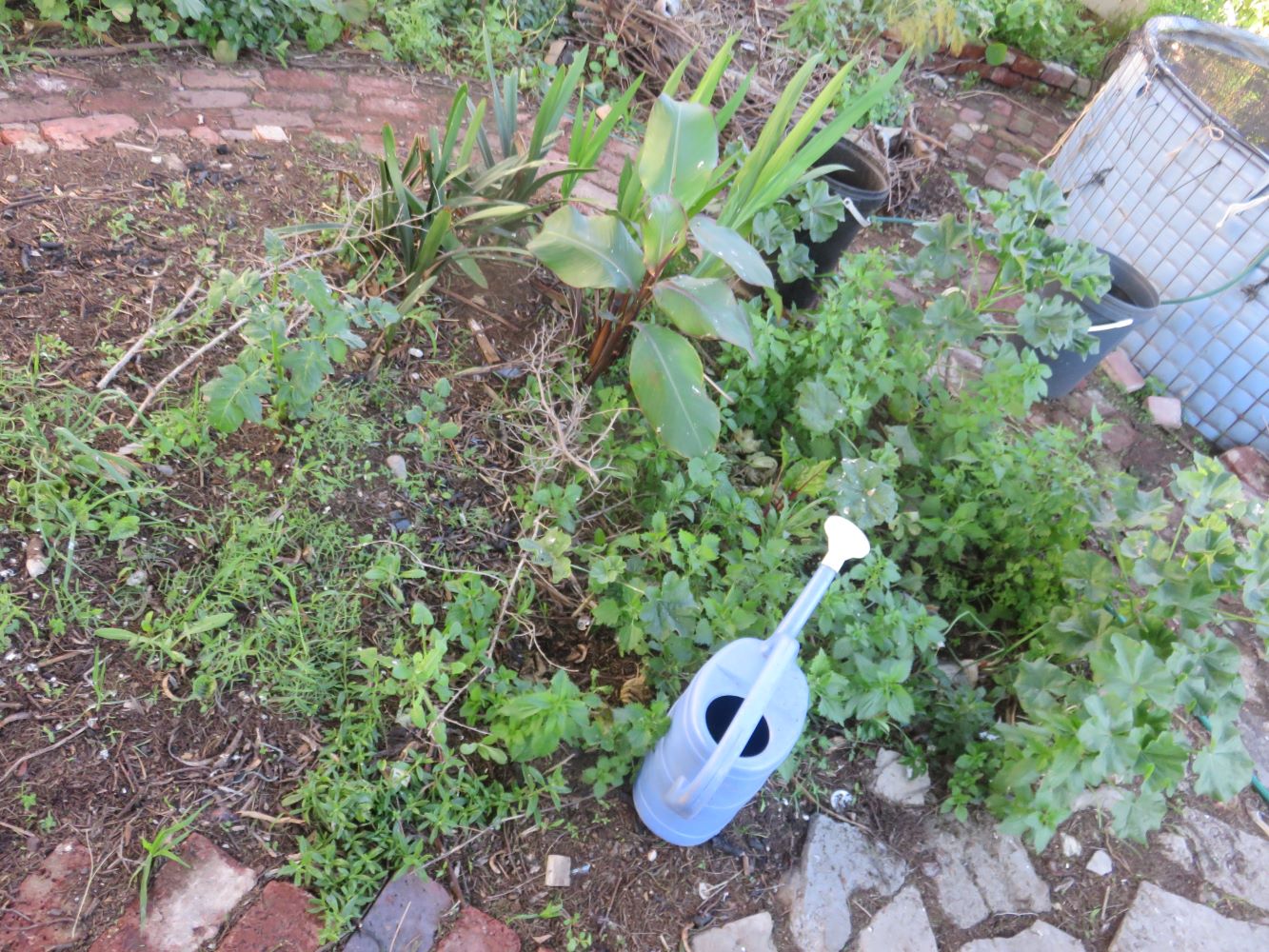 A few weeks after sowing, we see maybe... something can
A few weeks after sowing, we see maybe... something can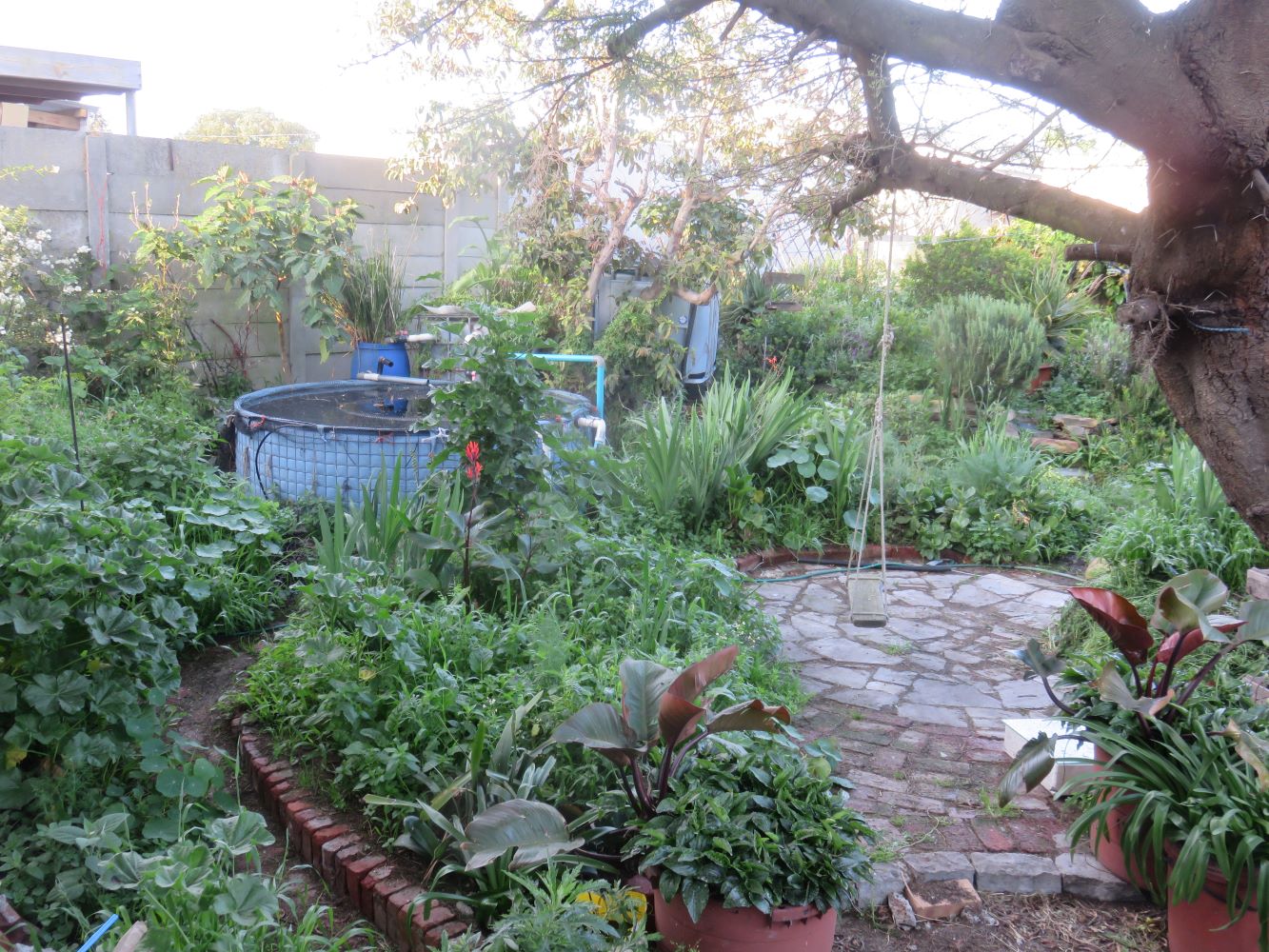 A few months later, unrecognizable delight to the eye
A few months later, unrecognizable delight to the eyeSourcing cover crop seed
The places where I got the seeds for the multi-species cover crops were very varied. To spare words I will just post a table of where I got them, and which plants germinated in this type of situation. Some plants like mustard and Tetragonia decumbens didn't do well, where they do fabulously in seed trays.
Cover crop seed list
with origin and amount of seed
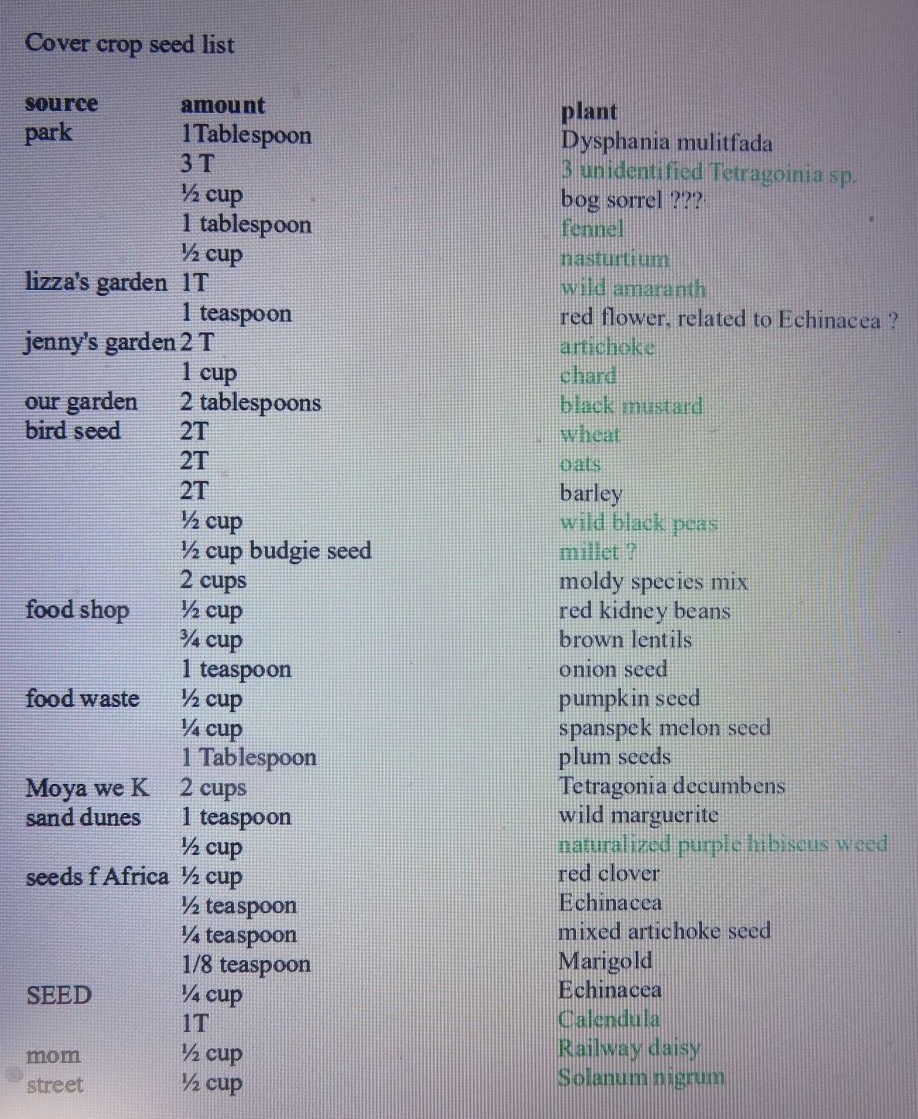 My seed list. Everyone's will be different. Successful germinations are colored green.
My seed list. Everyone's will be different. Successful germinations are colored green.Selecting cover crop seed
There are several things to think about
when selecting cover crop seed. As you can see from the list,
diversity is key, as is a diversity of origins for the seed. Every
place will have a different soil microbiome. You want to bring in as
much microbial life as possible and let it fight it out in your
garden till a dynamic equilibrium is achieved. Don't regret the losses, they will be heavy.
The big five !
There is another important selection principle. Regenerative farmers have found that a mix of five seed categories produces the most successful soil regeneration by cover crops. If one is missing it is a lot less effective. Apparently these groups of plants have chemistry in their roots that talks across the differences and augments growth.
These five plant groups are grasses, cereals, legumes, chenopods and brassicas. The first three are self explanatory. Chenopods fall under the large amaranth family and include amaranths, beets, chard and spinach. Brassicas include cabbage types and mustard.
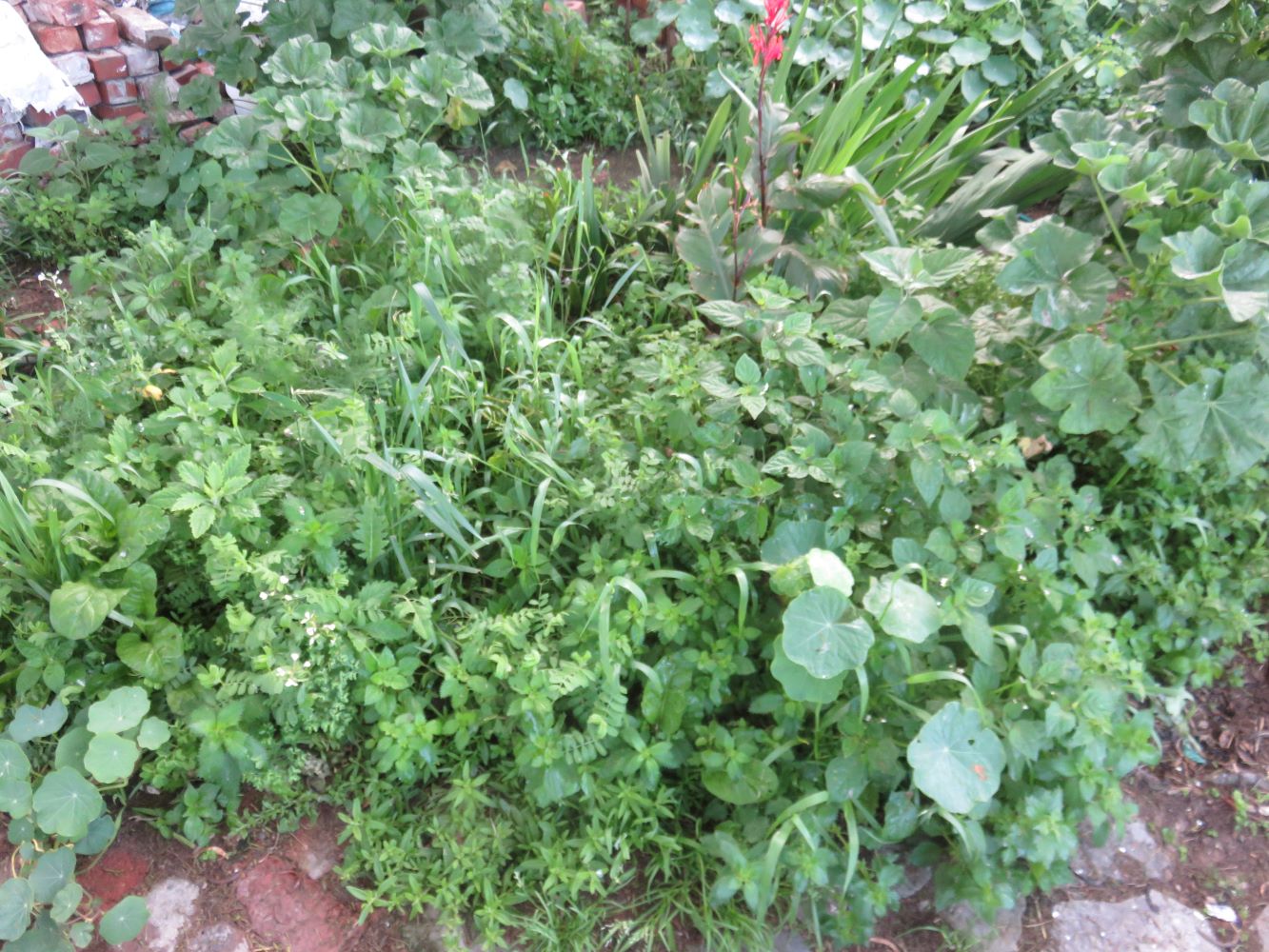 The area where nothing grew for decades
The area where nothing grew for decades .....has become my food basket
.....has become my food basket------
home page with links to all the topics in regenerative gardening that I've researched and written on
------
Saving our soil heading for links to other articles on soil and fertility
------
The greenidiom regenerative gardening blog
------
------
all inclusive website blog, recent posts
Restore Nature Newsletter
I've been writing for four years now and I would love to hear from you
Please let me know if you have any questions, comments or stories to share on gardening, permaculture, regenerative agriculture, food forests, natural gardening, do nothing gardening, observations about pests and diseases, foraging, dealing with and using weeds constructively, composting and going offgrid.
SEARCH
Order the Kindle E-book for the SPECIAL PRICE of only
Prices valid till 30.09.2023
Recent Articles
-
garden for life is a blog about saving the earth one garden at a time
Apr 18, 25 01:18 PM
The garden for life blog has short articles on gardening for biodiversity with native plants and regenerating soil for climate amelioration and nutritious food -
Cape Flats Sand Fynbos, Cape Town's most endangered native vegetation!
Apr 18, 25 10:36 AM
Cape Flats Sand Fynbos, a vegetation type found in the super diverse Cape Fynbos region is threatened by Cape Town's urban development and invasive alien plants -
Geography Research Task
Jan 31, 25 11:37 PM
To whom it may concern My name is Tanyaradzwa Madziwa and I am a matric student at Springfield Convent School. As part of our geography syllabus for this
"How to start a profitable worm business on a shoestring budget
Order a printed copy from "Amazon" at the SPECIAL PRICE of only
or a digital version from the "Kindle" store at the SPECIAL PRICE of only
Prices valid till 30.09.2023







